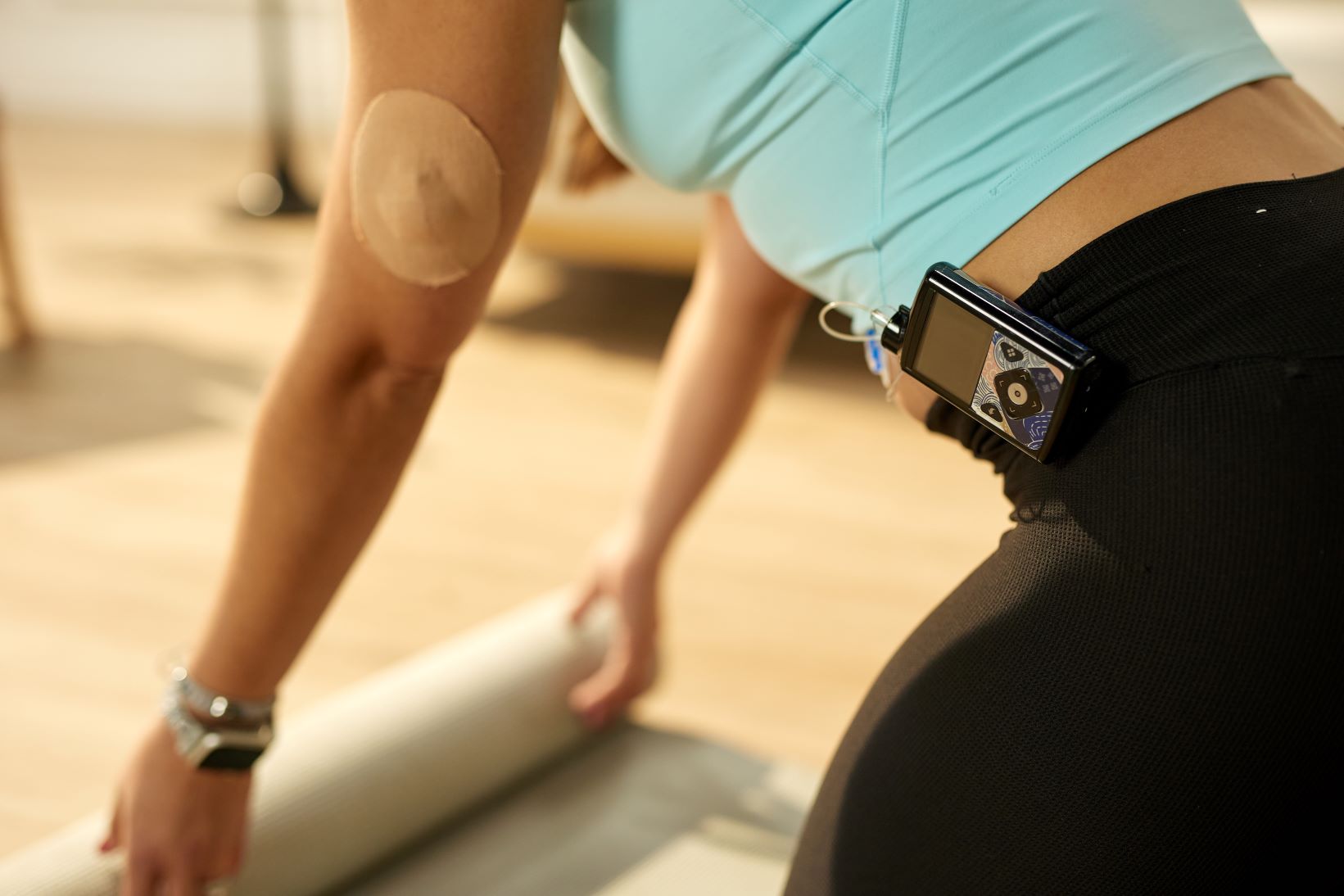Insulin pump maintenance tips and best practices

Insulin pump care
Properly caring for your insulin pump is important to help it manage your diabetes effectively. My name is Naomi, I’m a Medtronic employee living with type 1 diabetes, and have been using diabetes technology for more than 20 years.
I've compiled a list of helpful tips from pump user guides and my own personal experience - always be sure to consult the user guide for your pump if you're unsure about anything!
Insulin pumps are made to be durable enough to be part of your everyday life, but like anything, it’s good to take care of it. Sometimes we should go back to the basics of what works and what doesn’t. In my many years of living my best life while managing T1D, I know a pump goes along for the ride in many different scenarios, so here are a few things to keep in mind when using your pump daily.
Pro tip: Use a case to help keep your pump in tip-top shape. You can even choose from different colors so the pump can match your style.
How to handle your pump
Make sure your hands are clean
Avoid exposure to sunscreens, lotions, insect repellents, and household cleaning agents. So, if you’re spending the day cleaning with chemicals or just put lotion on, make sure to wash and dry your hands before handling your pump.
Be careful when pushing the buttons
When pushing the buttons on your pump, use the side or pad of your finger. Try to avoid sharp objects like keys or the tips of long or acrylic fingernails.
Open your battery compartment carefully
For your tubed insulin pump, use a thick coin (such as a nickel or quarter) to open and close your battery cap. Tighten until the slot is horizontal to prevent it from overtightening.
Pro tip: One thing that might help is to keep a coin nearby where you store your extra batteries or frequently change your site. If you normally change your pump battery in the kitchen while changing your site, place a few quarters in the silverware drawer so you always have one nearby.
How to wear your pump
Wear your device with the buttons facing
If you wear your tubed insulin pump where it touches your skin, make sure your device buttons are faced away from your body to reduce moisture exposure. Here are a few ways you can wear your pump:
- Clip it to your waistband or belt
- Place the pump (with the clip) into the pocket of your pants
- Use the SPIbelt or other body pouch to secure the pump while on the move
- Use a case to keep the pump secure on your waistband or belt
- Use the leg pouch to wear it around your thigh
Pro tip for the ladies: If you wear your pump in a bra, keep the buttons faced away from the skin (towards the material). And if it’s a really hot or cold day, put it in a bra pouch to keep it covered.
How to clean and store your pump
Clean with a mild detergent
There isn’t a set frequency of how often cleaning a pump is recommended, but it’s a good practice to keep your pump in good shape. When it’s time to clean your pump, wash your hands and use a cloth mixed with mild detergent (such as dish soap) and water to wipe your pump clean. You can also use a 70% alcohol wipe. Want to wipe down the nooks and crannies? For smaller parts of your pump, like the battery cap, remove residue from the compartment opening with a dry piece of cotton or cloth.
Whatever you do, don’t place your pump under running water or submerge it into any liquid.† Lastly, avoid cleaning it with household agents (like all-purpose cleaner, glass cleaner, hand sanitizer, or nail polish remover.)
Store in a cool, dry place
If you disconnect from your device, keep your pump, BG meter, and other diabetes supplies unexposed to direct heat and away from water. If your supplies must be outdoors, store them in a bag, or under a few light-colored towels, in a dry shady area. Since different items have various storage requirements, keeping them dry and close to room temperature will ensure that the pump and insulin will perform as expected when you reconnect.

Dry your pump if wet and use “Self Test”
If you notice moisture on your pump, dry it off with a clean, dry cloth. You can verify your pump is working properly by following the instructions for the “Self Test” found in your user guide. If your hands are wet, dry them off before handling your pump.
How to exercise with an insulin pump
Use a case, belt clip, or waist pouch when exercising
Working up a sweat feels good and helps cool down your body, but it can expose your pump to moisture without you even realizing it. Keep your pump dry while exercising and on hot days by wearing it in a case made from water-resistant materials such as a sports or nylon case, and/or on your belt clip. Using a waist belt like the fan-favorite SPIbelt can help keep your pump secure when exercising (and it even has a pass-through hole for tubing). If you decide to disconnect your pump while working out, make sure you put it in a safe place.

Disconnect during water activities
Your pump may be water-resistant, but not waterproof, so be sure to check your specific user guide.† If it’s water-resistant, disconnect from your pump when participating in water activities, showering, or using the sauna or steam room.
When spending the day at a beach, pool, or waterpark, consider staying connected to your pump until entering the water or “splash zone,” and take breaks from the water when you need to reconnect. (If you’re using a sensor, your pump might give you a “Lost sensor” signal if data hasn’t been received for more than 30 minutes, so bringing your pump back into range with your transmitter can be helpful.)
Saunas and steam rooms may not come to mind when you think of moisture, but they are high in heat and humidity, both of which are bad for your pump and the insulin inside it. Disconnect from your pump before entering either of these areas.
How to navigate devices and equipment that may cause interference
Minimize scanning technology exposure
Did you know that airport body scanners, X-rays, CT scans, PET scans, and MRIs can all interfere with your pump?
While going through airport security, remove both your pump and sensor if you’re going through the body scanner, but do not send the devices through the X-ray machine. As an alternative, you can go through an airport metal detector with your pump and CGM, or you can ask for a pat-down screening process.
At your doctor’s office, disconnect from your pump prior to any X-rays, CT scans, PET scans, or MRIs.
By following these maintenance tips and best practices, you can ensure that your insulin pump remains in optimal condition, providing you with reliable and effective diabetes management.
[Originally published 2015-08-15. Updated 2025-07-16]



